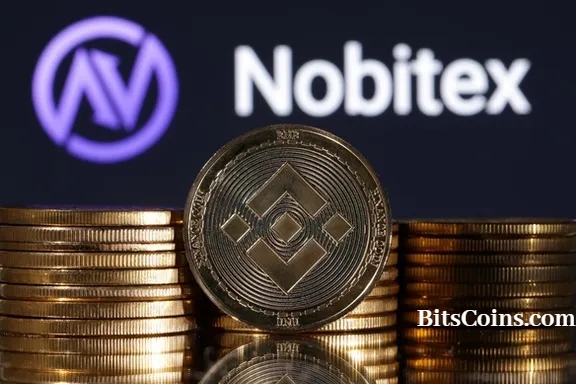U.S. House Plans Merger for Crypto Bills by August: A Step Toward Regulatory Clarity
In a significant move that could reshape the regulatory landscape for digital assets in the United States, the U.S. House Plans Merger is planning to merge multiple crypto-related bills into a comprehensive legislative package by August 2025. The goal of this deliberate consolidation initiative is to provide much-needed standardization, control, and clarity to the quickly expanding yet frequently misunderstood cryptocurrency sector.
As global competition for blockchain innovation intensifies, the U.S. government is facing mounting pressure from industry leaders, investors, and international policymakers to define a clear and coherent legal framework for cryptocurrencies, decentralized finance (DeFi), and stablecoins. This article explores the motivation behind this legislative merger, its potential implications for the crypto ecosystem, the content of the proposed bills, and what this means for the future of digital assets in America. U.S. House Plans Merger for Crypto
Background: The Regulatory Patchwork in the U.S.
For years, the U.S. crypto market has operated under a confusing and often contradictory regulatory patchwork. Key government agencies like the Securities and Exchange Commission (SEC) and the Commodity Futures Trading Commission (CFTC) have issued overlapping—and sometimes conflicting—guidelines.
While the SEC has argued that most cryptocurrencies are securities and therefore under its jurisdiction, the CFTC has maintained that some digital assets (like Bitcoin and Ethereum) are commodities.
This tug-of-war has created legal uncertainty, discouraged institutional participation, and led to high-profile lawsuits, including the ongoing case between the SEC and major exchanges like Coinbase and Binance.
The planned bill merger by the House is being seen as a landmark effort to harmonize these conflicting positions and provide a comprehensive legal framework for the industry.
What’s Being Merged? An Overview of the Bills
At the center of this legislative initiative are several key bills that have already passed House committees or have bipartisan sponsorship. Among them are:
1. The Financial Innovation and Technology for the 21st Century Act (FIT21)
-
Aims to clearly define the jurisdiction of the SEC and CFTC.
-
Proposes consumer protection standards and exchange registration processes.
-
Provides definitions for “digital commodities” and “digital securities.”
2. The Stablecoin Regulation Act
-
Focuses on regulating the issuance and backing of stablecoins like USDT and USDC.
-
Calls for banks and licensed entities to issue stablecoins under strict reserve and audit standards.
3. The Blockchain Regulatory Certainty Act
-
Seeks to protect non-custodial crypto services (like validators and miners) from being treated as money transmitters.
4. The Clarity for Payment Stablecoins Act
-
Proposes a clear legal structure for payment-based stablecoins.
-
Includes provisions for KYC/AML compliance and transparency.
The House plans to consolidate these bills into one unified piece of legislation. The goal is to introduce this merged bill for a full House vote by August, before the legislative recess.
Why Now? The Strategic Timing Behind the Move
There are several reasons why lawmakers are pushing for action now:
-
Rising Retail and Institutional Participation: With ETFs, global adoption, and increasing retail interest, the crypto market is no longer a fringe sector. A legal framework is urgently needed.
-
Election Year Pressure: As the 2024 U.S. presidential election approaches, both Republicans and Democrats are recognizing the growing influence of tech-savvy and crypto-friendly voters.
-
Preventing Regulatory Arbitrage: Countries like the UK, Singapore, and UAE are advancing with clear crypto laws.
-
High-Profile Lawsuits and Legal Confusion: Court battles involving the SEC have made it clear that the current system is insufficient and legally murky.
Industry Reaction: Cautious Optimism
Several key stakeholders have issued statements:
-
Coinbase CEO Brian Armstrong stated that a unified bill could “finally unlock real innovation while keeping consumers safe.”
-
Ripple Labs, which has been battling the SEC in court, called the move “a positive step toward global alignment on digital asset standards.”
-
Crypto advocacy groups like the Blockchain Association and Coin Center also praised the legislative effort, while urging lawmakers to involve industry voices in finalizing the bill.
However, some concerns remain:
-
Overregulation fears: Some fear the final merged bill may lean too heavily toward surveillance or government control.
-
Stablecoin limitations: There’s pushback on provisions that restrict stablecoin issuance to only banks, which could stifle innovation in DeFi and fintech startups.
What’s at Stake for the Market?
-
Boost Institutional Investment: Clarity would encourage pension funds, asset managers, and banks to enter the space.
-
Reduce Legal Risk: Clear definitions of commodities vs. securities could reduce lawsuits and SEC overreach.
-
Support Innovation: Developers and entrepreneurs would finally know the legal boundaries they must operate within.
-
Encourage Global Standardization: As a financial leader,
On the flip side, if the bill fails or is heavily diluted, it could further delay progress and push innovation offshore.
Political Landscape: Bipartisan But Not Bulletproof
The merger plan has bipartisan support, especially from tech-forward lawmakers like Rep. Patrick McHenry (R-NC) and Rep. Maxine Waters (D-CA). But it still faces hurdles:
-
Some progressive Democrats fear the bill may weaken consumer protection.
-
Sherrod Brown, has shown reluctance toward crypto deregulation.
-
The White House has yet to issue a formal position, though insiders report growing interest from President Biden’s economic advisors.
Despite these challenges, analysts believe this is the most serious and organized attempt yet to legislate crypto meaningfully at the federal level.
Conclusion: Toward a New Era of U.S. Crypto Policy
The U.S. House’s plan to merge crypto-related bills into a comprehensive framework by August represents a pivotal moment in the evolution of digital asset regulation. If successful, it could lay the foundation for a clear, fair, and innovation-friendly regulatory environment, helping the U.S. retain its status as a global fintech leader.
As we approach the August deadline, investors, developers, and companies will be watching closely. Whether this legislation unlocks the next chapter of crypto growth or introduces new complexities depends on how effectively lawmakers balance oversight with opportunity.
For now, cautious optimism prevails—and the clock is ticking. @bitscoins.site
















